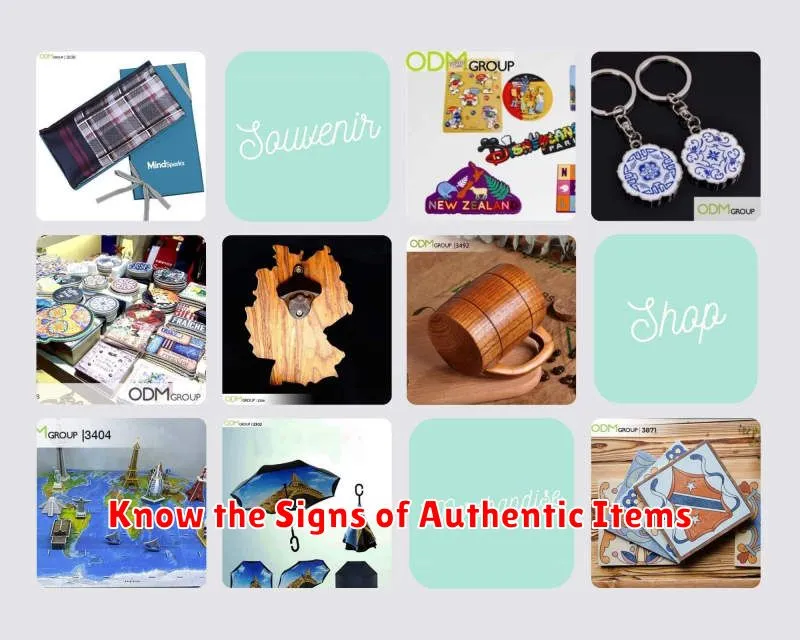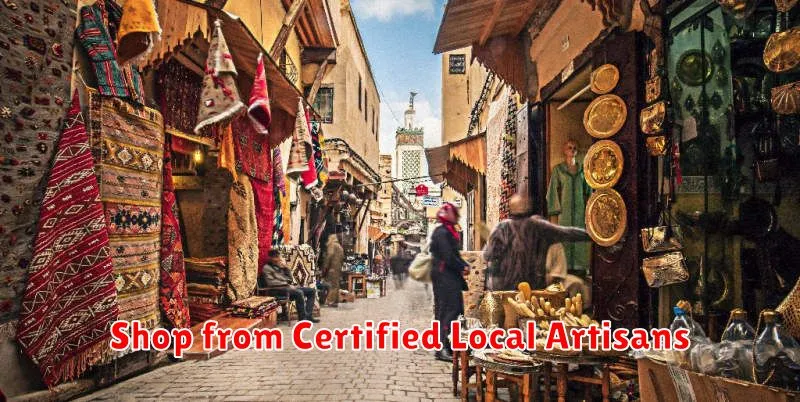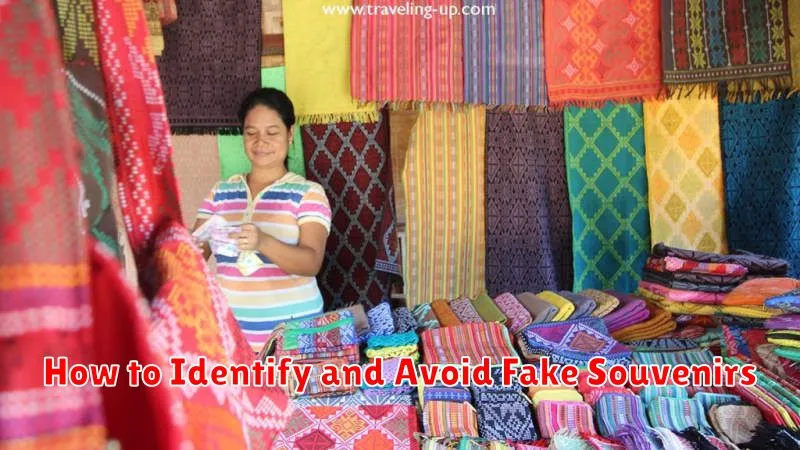Traveling often involves bringing home a piece of the destination in the form of souvenirs. However, the unfortunate reality is that many marketplaces are flooded with fake souvenirs. These counterfeit items not only disappoint with their inferior quality but also contribute to unethical practices. This article explores how to identify fake souvenirs and provides valuable tips on how to avoid purchasing these counterfeits. Learn to distinguish between genuine handcrafted treasures and mass-produced imitations, ensuring your mementos truly represent the cultures and crafts you wish to support. Protecting yourself from souvenir scams is crucial to a positive and ethical travel experience.
From seemingly authentic handicrafts to branded merchandise, fake souvenirs can be deceptively convincing. This guide will equip you with the knowledge necessary to spot fake souvenirs, saving you money and ensuring you acquire authentic items. We will delve into the telltale signs of counterfeiting, offering practical advice for avoiding fake souvenirs regardless of your destination. By understanding the common tactics employed by vendors selling fake souvenirs, you can make informed purchasing decisions and contribute to the preservation of authentic craftsmanship.
Why Fake Souvenirs Are Common
The prevalence of counterfeit souvenirs stems from a combination of factors, creating a lucrative market for fraudulent goods. One key driver is the demand for affordable mementos. Tourists often seek budget-friendly options, making them vulnerable to deceptively cheap imitations.
High profit margins for counterfeiters are another significant motivator. The cost of producing fake souvenirs is typically low, allowing for substantial profits even when sold at discounted prices compared to genuine articles. This incentivizes the production and distribution of counterfeit goods.
The ease of replication also contributes to the problem. Many souvenirs are relatively simple to copy, particularly those made of common materials or featuring easily reproducible designs. This ease of manufacturing facilitates large-scale production of fake items.
Finally, lax enforcement in certain regions can exacerbate the issue. Insufficient regulations or limited resources dedicated to combating counterfeiting create an environment where fraudulent souvenir production and sales can thrive unchecked.
Know the Signs of Authentic Items

Authenticity verification varies significantly depending on the type of souvenir. However, some general principles apply. Quality is often a key indicator. Genuine items usually exhibit superior craftsmanship, with close attention to detail and finishing. Look for inconsistencies like uneven stitching, poorly applied paint, or low-quality materials, which may suggest a counterfeit.
Packaging can also offer clues. Authentic products typically come in professional packaging with clear branding, accurate product information, and often security features like holograms or unique serial numbers. Counterfeiters often cut corners on packaging.
Price is another important factor. If a deal seems too good to be true, it probably is. Significantly discounted prices on high-demand items should raise suspicion. Research the typical price range for the souvenir you’re interested in before making a purchase.
Finally, consider the vendor. Reputable shops and authorized dealers are less likely to sell counterfeit goods. Be wary of street vendors or unofficial retailers offering unbelievably low prices. When in doubt, ask questions about the item’s origin and authenticity.
Shop from Certified Local Artisans

One of the most effective ways to avoid purchasing counterfeit souvenirs is to buy directly from certified local artisans. These artisans are typically deeply invested in their craft and the authenticity of their products. Look for certifications or affiliations with local artisan guilds or organizations. This can offer an added layer of assurance that the products are genuine and made with traditional techniques.
Visiting local craft markets or workshops allows you to interact directly with the artisans, inquire about their process, and gain a deeper appreciation for the cultural significance of the souvenir. This personal connection also reduces the risk of purchasing a fake. You can often witness the creation process firsthand, ensuring the item’s authenticity.
By supporting local artisans, you are not only acquiring a genuine piece of cultural heritage, but also contributing directly to the local economy and preserving traditional craftsmanship. It’s a win-win situation for both the traveler and the community.
Avoid Tourist-Only Markets
Tourist-only markets are often hotbeds for counterfeit goods. Vendors in these areas cater specifically to visitors, often prioritizing quick sales over authenticity. Recognize these markets by their prevalence of generic souvenirs, inflated prices, and high-pressure sales tactics. They frequently lack local shoppers and primarily feature items like “I ♥ [City Name]” t-shirts and mass-produced trinkets.
Instead, seek out markets frequented by locals. These markets, while sometimes more challenging to find, typically offer a more authentic shopping experience. Look for markets that sell everyday goods alongside souvenirs, indicating they serve the local community as well. You’ll likely find unique, handcrafted items and more reasonable prices in these less tourist-centric locations. Inquire with hotel staff or local residents for recommendations on where to find these more authentic markets. This can lead to discoveries of hidden gems and truly special souvenirs.
Ask for Background or Certification
A reputable vendor often possesses documentation validating the authenticity of their products. Don’t hesitate to inquire about the souvenir’s origin and any supporting certifications. Legitimate artisans and businesses are typically proud to share this information.
Look for certifications of authenticity, origin, or fair trade practices. These certifications can provide valuable reassurance about the product’s genuine nature and ethical sourcing. While not every authentic souvenir will have formal certification (especially from smaller, independent artisans), it serves as an important signal where available.
Inquiries about the item’s creation process, materials used, and cultural significance can also be revealing. Evasive answers or a lack of specific knowledge should raise a red flag. A genuine artisan will be knowledgeable and passionate about their craft and heritage.
Understand the Cultural Value of Souvenirs
Authentic souvenirs represent more than just a trinket; they embody the cultural heritage of a place. They tell stories of traditions, artistry, and local life. Purchasing a genuine souvenir supports local artisans and helps preserve these traditions. It allows you to take home a piece of a culture’s history and contributes to its ongoing vitality.
Consider the example of handwoven textiles. A genuine piece reflects generations of skill and design, unique to a specific region. Its purchase directly supports the artisan and their community. In contrast, a mass-produced imitation undermines this cultural value, offering no real connection to the place it supposedly represents.
Understanding the cultural significance of souvenirs empowers you to make informed purchasing decisions. It encourages you to seek out authentic items and appreciate the craftsmanship and heritage they represent. This mindful approach not only benefits the local communities but also enriches your travel experience.
Support Genuine Craftsmanship
Purchasing authentic souvenirs goes beyond acquiring a simple trinket; it represents supporting local artisans and their unique cultural heritage. Genuine craftsmanship often involves generations-old techniques, passed down through families and communities. By choosing authentic items, you contribute to the preservation of these valuable traditions.
Counterfeit goods, on the other hand, undermine these traditions and often exploit workers. They deprive local economies of crucial income and can damage the reputation of a region’s artistic heritage. Authentic crafts often utilize high-quality, locally sourced materials, contributing further to the local economy.
Think of your purchase as an investment in preserving cultural heritage. When you buy genuine crafts, you are directly supporting the livelihoods of skilled artisans and helping to ensure their skills continue to thrive. This mindful approach to souvenir shopping enriches your travel experience and contributes positively to the communities you visit.

